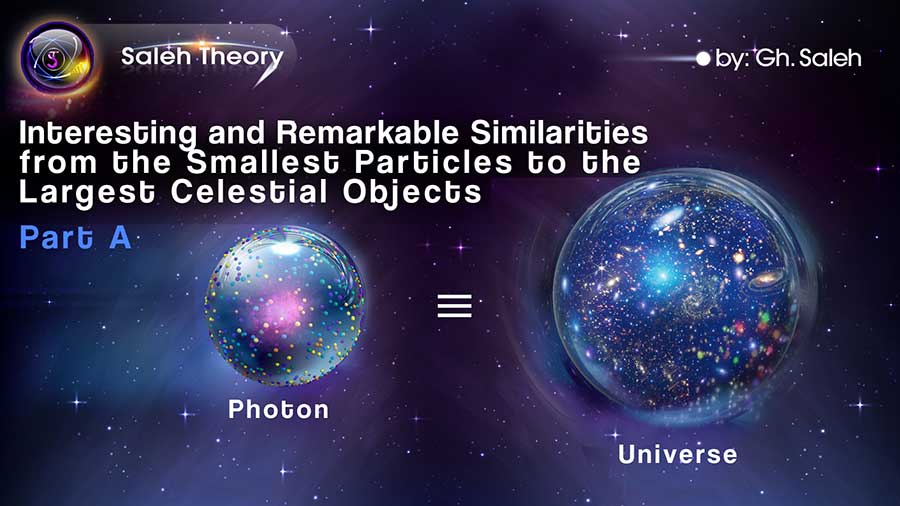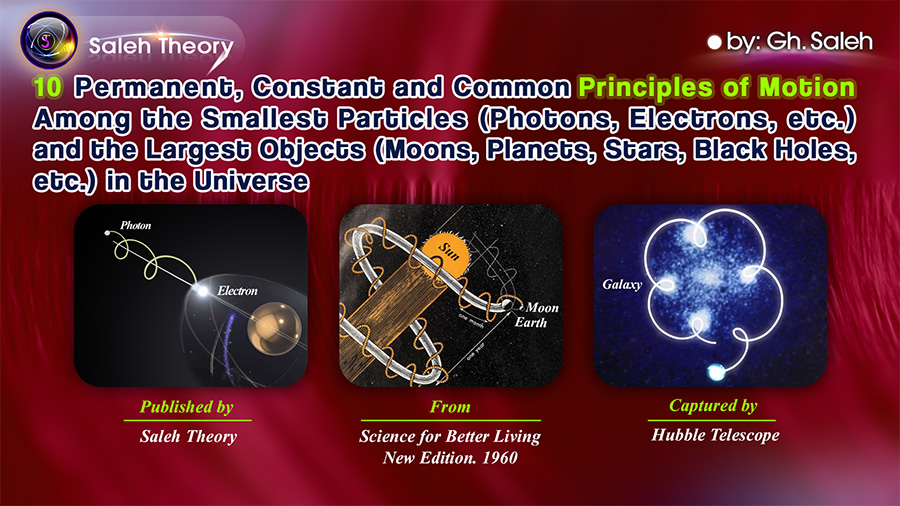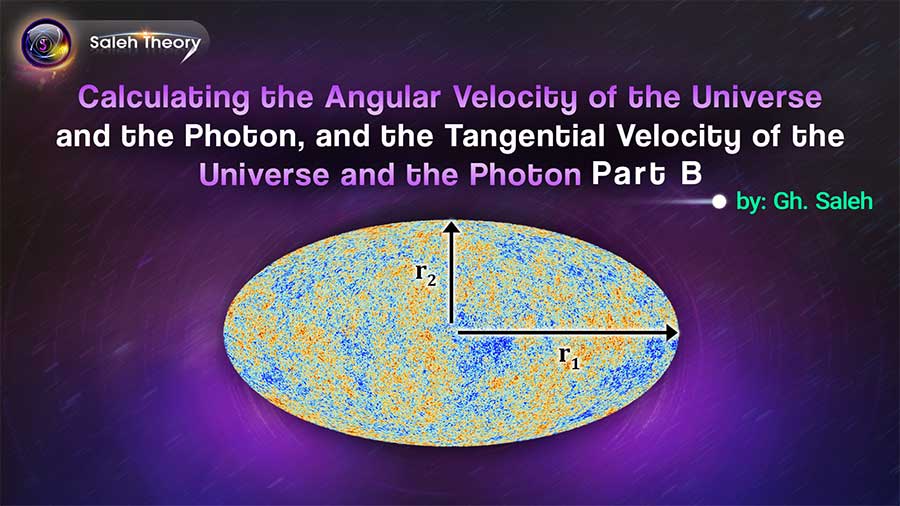
Interesting and Remarkable Similarities from the Smallest Particles to the Largest Celestial Objects Part A
Given that the mass of objects in the universe has an actual and real nature, meaning it occupies space, is affected by force, has the ability to transfer energy, is observable, and so on, some interesting points can be made for all objects in the universe, from the smallest subatomic particle – the photon – to the most enormous cosmic structure.
Photons: Photons are the fundamental particles that form electrons, protons, and neutrons. These spherical particles rotate around themselves and are composed of tiny particles called "Cidtonium" (equivalent to one billionth of a photon), which rotate around a transient axis passing through the centre of the rotating photon.
Atoms: Atoms have a spherical nucleus and electrons which are also spherical and orbit this nucleus. The structure of an atom is also a combination of the nucleus orbiting around itself and the electrons orbiting around it.
Planetary Systems: In this system, there's a central spherical planet that both rotates around itself and is surrounded by satellites (from one to hundreds) that orbit that planet.
Solar Systems: Each solar system also includes a spherical star at its centre, which rotates both around itself and its galaxy, and tens of planets orbit this star.
Galaxies: Within the structure of galaxies, a supermassive black hole resides at its heart, rotating around itself while billions of stars orbit around it.
Conclusion:
Astonishingly, the structure and pattern of motion of the smallest known particles are the same as those of the largest objects in the universe [10]. From photons to galaxies, everything follows a common rule: rotation, concentric orbits, and spherical harmony. It's as if nature has used a single template at all levels of existence.
References:
[1] Peebles, Phillip James Edwin. Principles of physical cosmology. Princeton university press, 2020.
[4] Saleh, Gh. "Discovery of the Smallest Particle in the Universe, Cidtonium, Using the Big Bang Phenomenon." Saleh Theory, 04 Feb. 2023, https://www.saleh-theory.com/article/discovery-of-the-smallest-particle-in-the-universe-cidtonium-using-the-big-bang-phenomenon
[5] Saleh, Gh. "A New Discovery of the Most Condensed Matter in the Universe, 1025 Times of a Black Hole Cidtonium." Saleh Theory, 29 Dec. 2022, https://www.saleh-theory.com/article/a-new-discovery-of-the-most-condensed-matter-in-the-universe-1025-times-of-a-black-hole-cidtonium
[6] Saleh, Gh. "New discovery of smallest particle in the universe, one billionth, billionth, billionth of a photon (Cidtonium)." Saleh Theory, 10 Dec. 2022, https://www.saleh-theory.com/article/new-discovery-of-smallest-particle-in-the-universe-one-billionth-billionth-billionth-of-a-photon-cidtonium
[7] Bohr, Niels. "I. On the constitution of atoms and molecules." The London, Edinburgh, and Dublin Philosophical Magazine and Journal of Science 26.151 (1913): 1-25.
[9] Lissauer, Jack J., and Imke De Pater. Fundamental planetary science: physics, chemistry and habitability. Cambridge University Press, 2013.
[10] Carroll, Bradley W., and Dale A. Ostlie. An introduction to modern astrophysics. Cambridge University Press, 2017.
[11] Kormendy, John, and Luis C. Ho. "Coevolution (or not) of supermassive black holes and host galaxies." Annual Review of Astronomy and Astrophysics 51.1 (2013): 511-653.
[12] Mandelbort, Benoit B. "The fractal geometry of nature." M. San Francisco: Freeman (1982).
 Download PDF
Download PDF Articles


